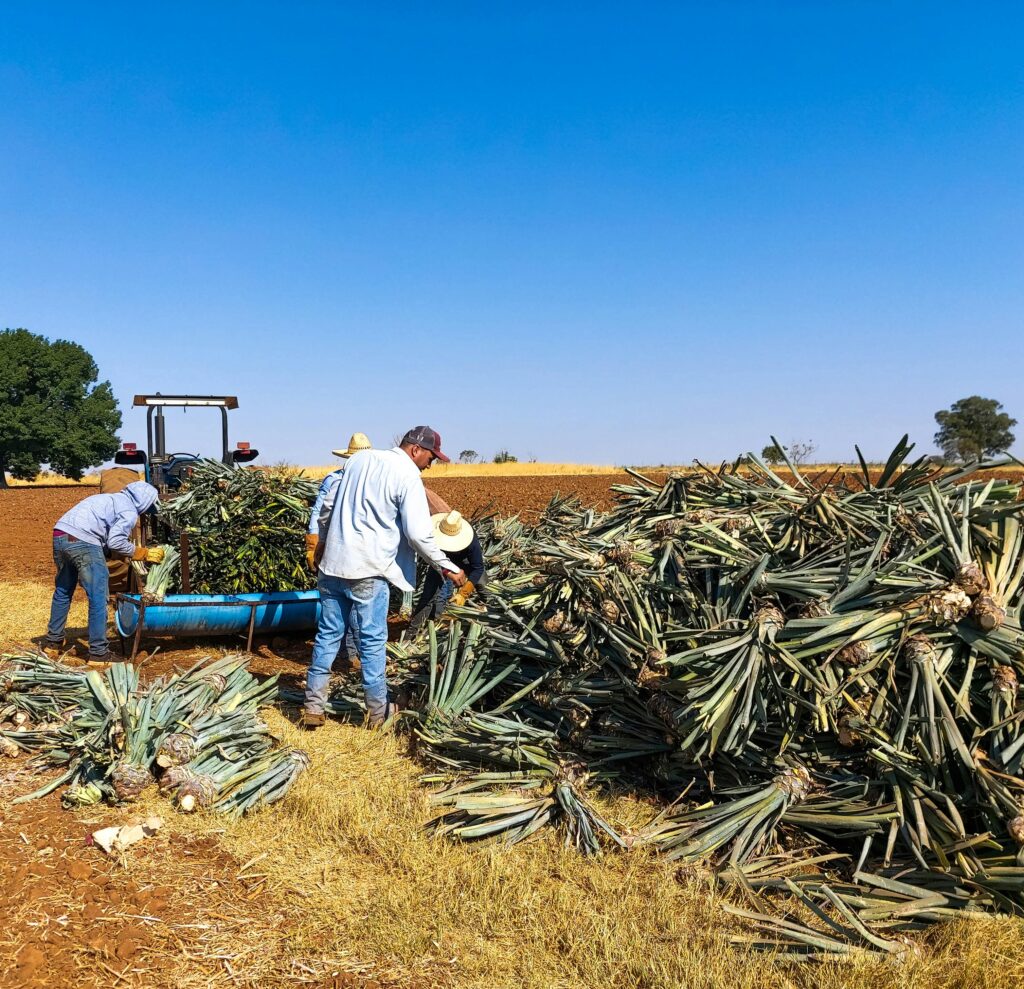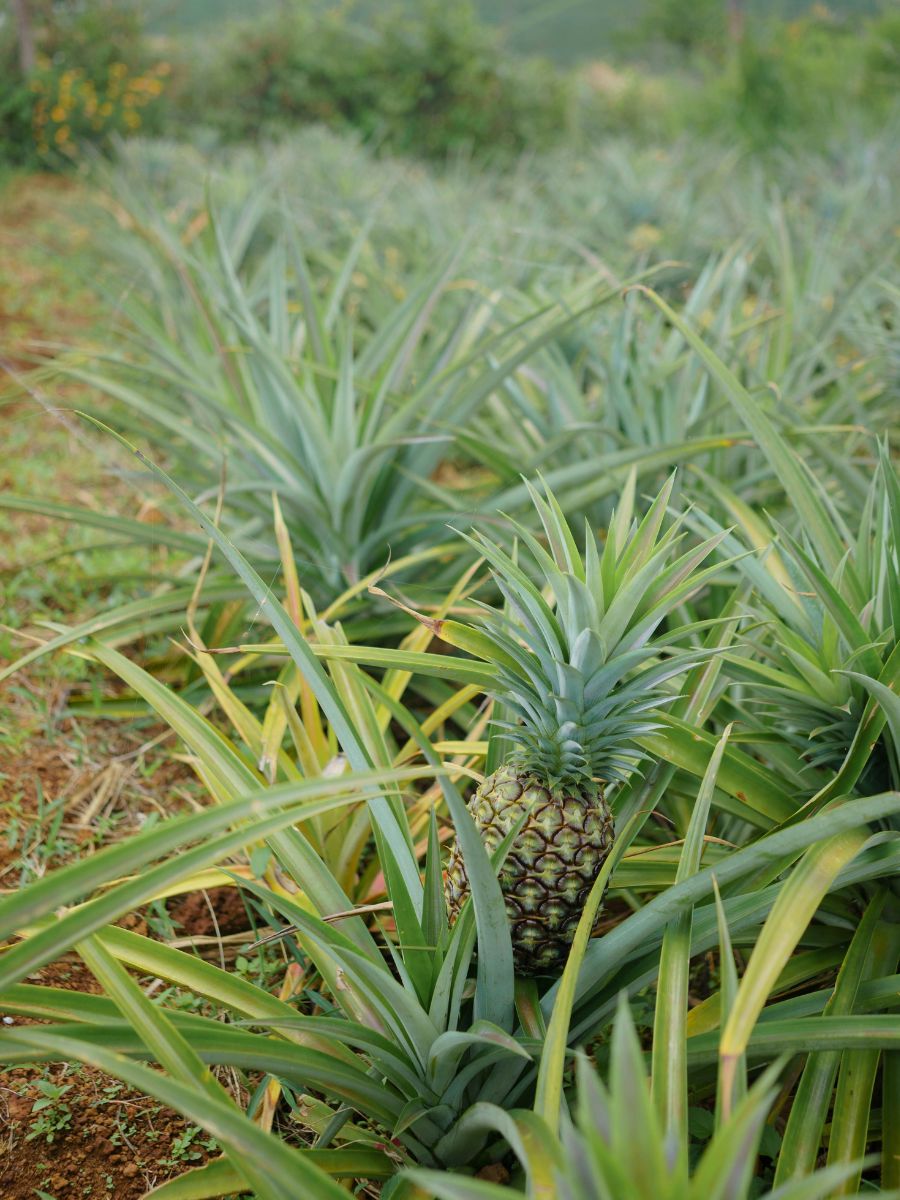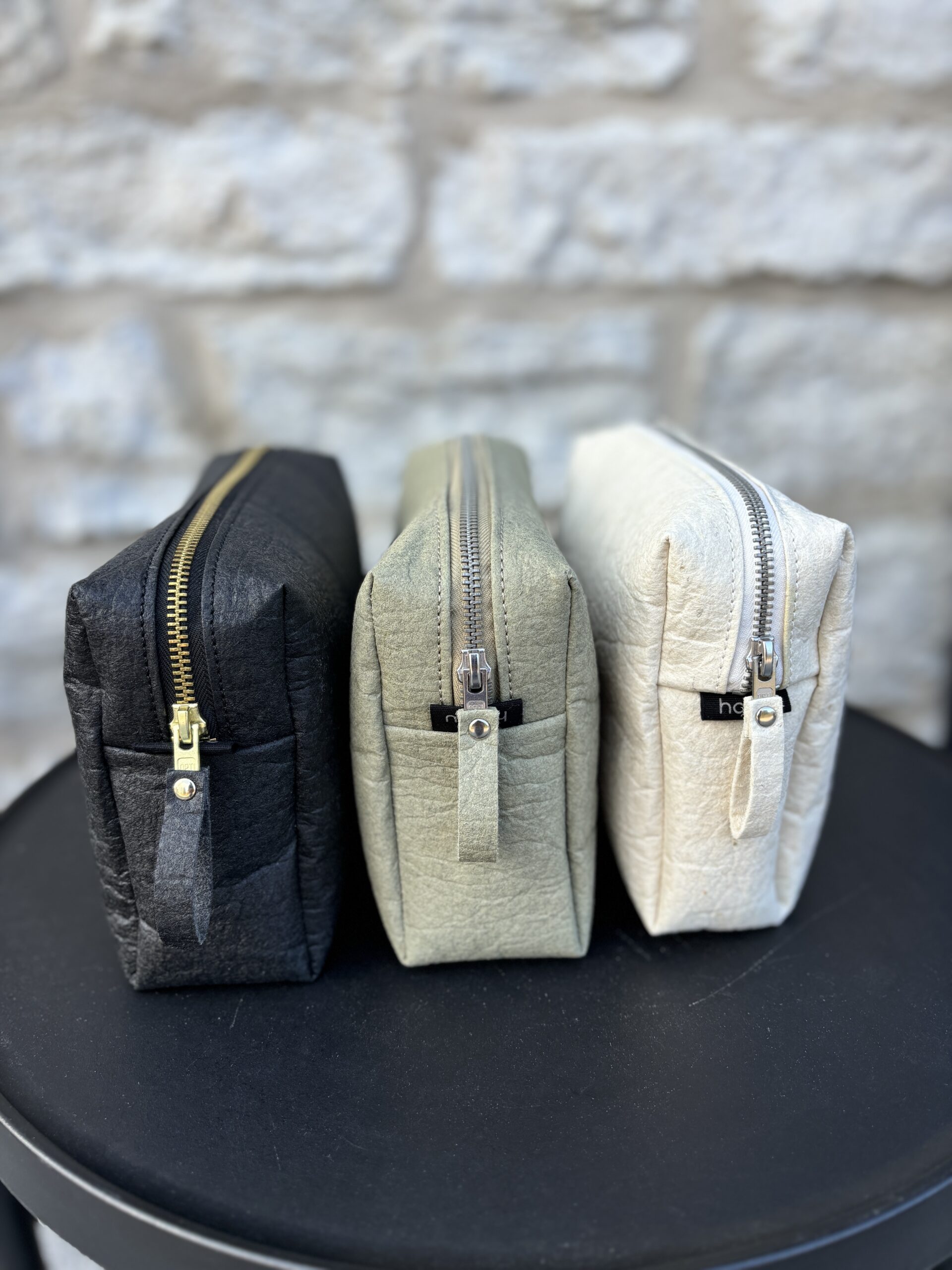Pineapple skin: an innovation in eco-friendly materials
Pineapple skin, also known as Piñatex, is a sustainable and innovative material made from the fibres of pineapple leaves. The development of this material was the brainchild of a visionary called Carmen Hijosa, who was looking for an alternative to leather, particularly because of its lower environmental impact. Pineapple skin is a perfect example of how agricultural waste can be transformed into a valuable resource.

How is Pineapple Skin Made?
The pineapple wax production process starts with the harvesting of pineapple leaves, a by-product of normal pineapple cultivation. These leaves, which would otherwise be left to decompose in the field, are collected and their fibres extracted. The separated fibres are cleaned and dried, and then the dried leaves are transformed into a mass of unbound material. A bio-based polymer is added to this material to give it strength and flexibility. Finally, the material is subjected to a finishing process to give the pineapple skin a leather-like texture and appearance.
Use in industries and products
Although pineapple leather is still a relatively new textile material compared to ordinary leather, it is already widely used in a variety of industries, including fashion, furnishing and automotive. The material is steadily growing in popularity due to its ecological benefits and versatility.
- Fashion and accessories industry: pineapple leather is used to make a variety of products such as bags, shoes, purses and clothing. The unique texture and durability of this material make it an excellent alternative to animal leather.
- Furnishing industry: pineapple leather is also used as a covering material for furniture and decorative elements. Its natural origin and environmental friendliness make it an attractive choice for conscious consumers.
- Automotive: more innovative car manufacturers are starting to experiment with pineapple leather in car interiors, offering more ecological alternatives to traditional leather and synthetic materials.
Benefits
Pineapple skin has a number of advantages that make it an attractive choice for various industries:
Environmentally friendly: Pineapple skin is made from renewable and biodegradable materials. Its production reduces agricultural waste and does not require animal husbandry, which in turn reduces greenhouse gas emissions and water use.
Sustainability: the production of pineapple wax supports sustainable agriculture and provides additional income to pineapple growers who can sell their by-products.
Versatility: pineapple skin is strong, flexible and lightweight, making it suitable for a wide range of products. Its natural appearance and texture give products a unique and beautiful value.
Animal-free: Pineapple skin is a vegan-friendly alternative to animal skin that meets conscious consumer demands and helps reduce animal suffering.
All in all, pineapple leather is an innovative and environmentally friendly material that offers many advantages over traditional leathers and synthetic materials. Its use is steadily growing, offering a new direction for the fashion, furnishing and automotive industries, while contributing to the promotion of sustainability and environmental protection. We at Haruus are delighted to introduce you to a material that fits well with our values. We have created a range of pineapple leather products, which we invite you to discover in our e-shop or in our studio.
-
 Ananassinahast kosmeetikakott€69.00
Ananassinahast kosmeetikakott€69.00 -
 Ananassinahast tote bag€225.00
Ananassinahast tote bag€225.00






